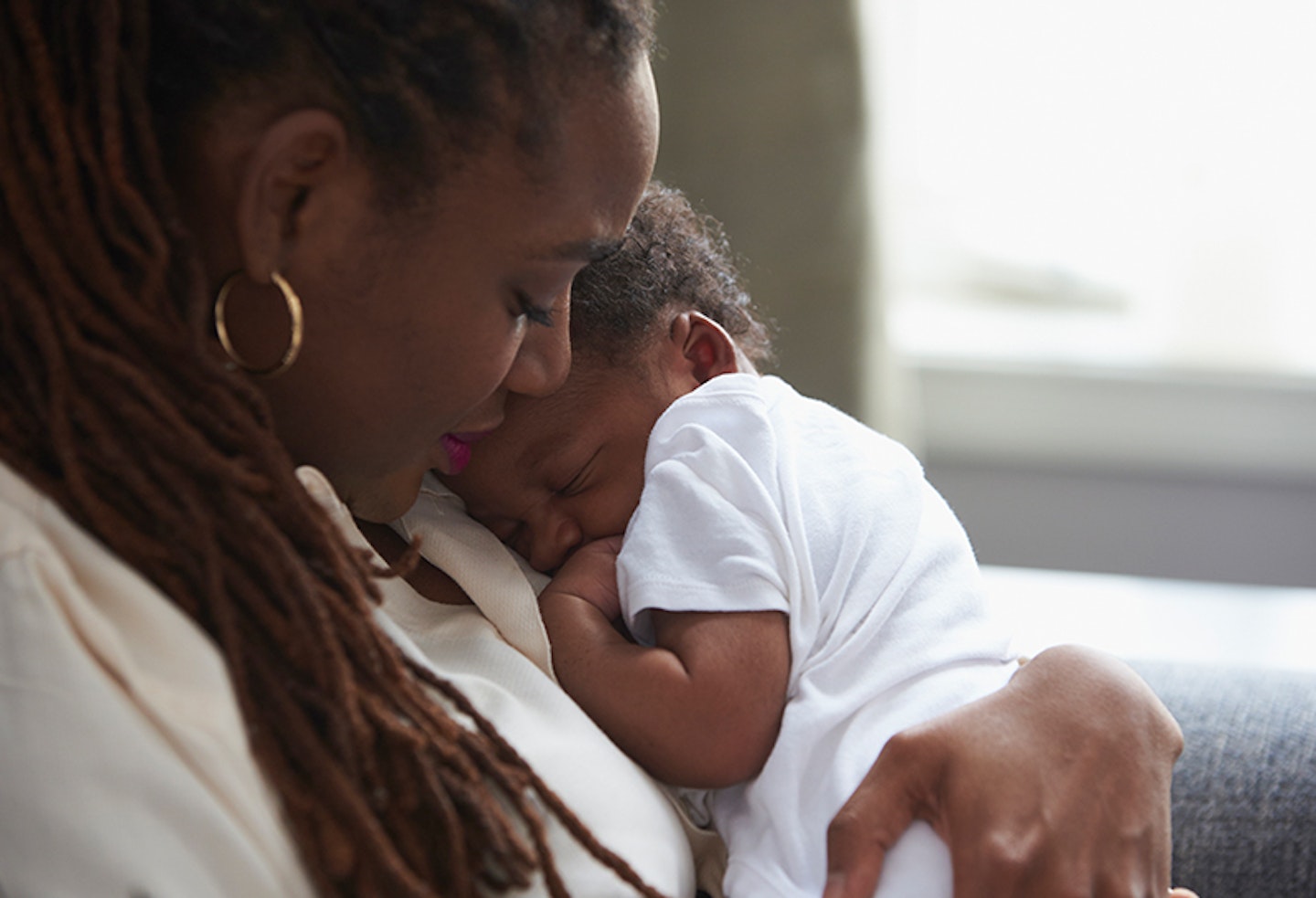Most mums-to-be are well versed on the changes and challenges that come with each of the three trimesters of pregnancy, but what about the fourth trimester? The fourth trimester refers to the first 12 weeks of baby's life and the transition period from womb to the big wide world.
From feeding to sleeping, here's all the expert advice you need to help guide your baby through the fourth trimester.
What is the fourth trimester?
The term 'fourth trimester' is used to describe the period that lasts from the moment they're born until they are three months old.
Trimester might sound like a bit of a funny term, considering your baby is now out of your womb, but over the next three months, they'll be experiencing a lot of new things and getting used to their new found senses.
There's a growing parenting theory about how to help your baby to adjust to the outside world after months in the womb. Pioneered by Dr Harvey Karp, author of The Happiest Baby on the Block, the book is based on the idea that parents treat themselves as a ‘walking uterus’ in the first three months after birth.
‘Our babies aren't like horses. They can't run the first day of life,’ Karp says. ‘And so we need to recognise that they're evicted from the womb three months before they're ready for the world.’
Parenting expert Sarah Ockwell-Smith adds, ‘To empathise with our newborns feelings we need to put ourselves in their place, to imagine experiencing their world – but which world? The world they have spent most of their life in, their ‘womb world’ or the world they are in now – our world.’
So how can we go about helping our babies adjust?
How will my baby develop in their fourth trimester?

Senses
The biggest change in your baby's senses will be their sight. While it starts out rather blurry after they're born, their vision starts to improve and by the time they're eight to nine weeks old, their vision is just as good as an adults.
When it comes to taste and smell, your baby already has strong senses and is able to smell the familiar scent of their mum, which is what gives them the instinct to bob their head around and find your nipple to feed.
And if you've been playing music to your baby for the past few months and even reading to them, this isn't wasted as they can hear in the womb and when they're born, they'll instantly be able to recognise your voice.
Physical development
It's fair to say that when they're born, they're physically very limited, but giving your baby regular tummy time will help them develop their strength and by three months old, they might even be able to push themselves up.
Sleep
Your baby will sleep a lot in these first few months, but it may take them a while to get into a sleep routine as they still don't know the difference between day and night. For now, let them sleep as much as they need to until they get into a good routine.
Crying
It's totally normal for your baby to cry a lot during the fourth trimester, and the crying will peak around the six week mark. The crying will usually ease off by the three month mark.
Feeding
Your baby will need to feed little and often on demand in their first few months as they only have very small stomachs. The more time you spend with your baby, the more you'll get to know their cues for when they're hungry and want to feed.
The more you get to know these cues, the less likely it is that your baby will start crying meaning they're more likely to latch on better if breastfeeding.
How can I soothe my baby during their fourth trimester?

Swaddling
Babies spend months enclosed in the womb, so whilst they get used to all the space around them in the first few months, swaddling is a great way to recreate that feeling and help them feel safe. The best material to use for a swaddle is 100% jersey cotton as the natural elasticity in this material allows your baby to move, flex and stretch.
White Noise
Babies love different sounds, but in the first few months it’s actually white noise that’s the most calming; recreating the sorts of noises they’re used to hearing in the womb. Shushing also imitates the continual whooshing sound made by the blood flowing through arteries near the womb.
Baby wearing
Babies are used to feeling the movements of the mother in the womb, so it’s understandable why newborns love feeling attached to their mum when they’re out in the big wide world. Carrying your baby around in a sling is a great way to recreate this safe womb feel and they’re able to tune into the calming sense of their mum’s heartbeat and breathing. The bonus for mums is that it frees up your hands!
Position
Karp recommends placing a baby on her left side to help with digestion, or on her stomach to provide reassuring support. Once the baby is sleeping peacefully, you can turn her onto her back, which experts say is the safest sleep position for babies.
Swinging
Every movement a pregnant mum makes feels like a swinging motion in the womb as your baby, so swinging your baby in your arms, having a jig or placing them in a rocker imitates this safe, recognisable feeling. It’s a great way to bond with your baby, too.
